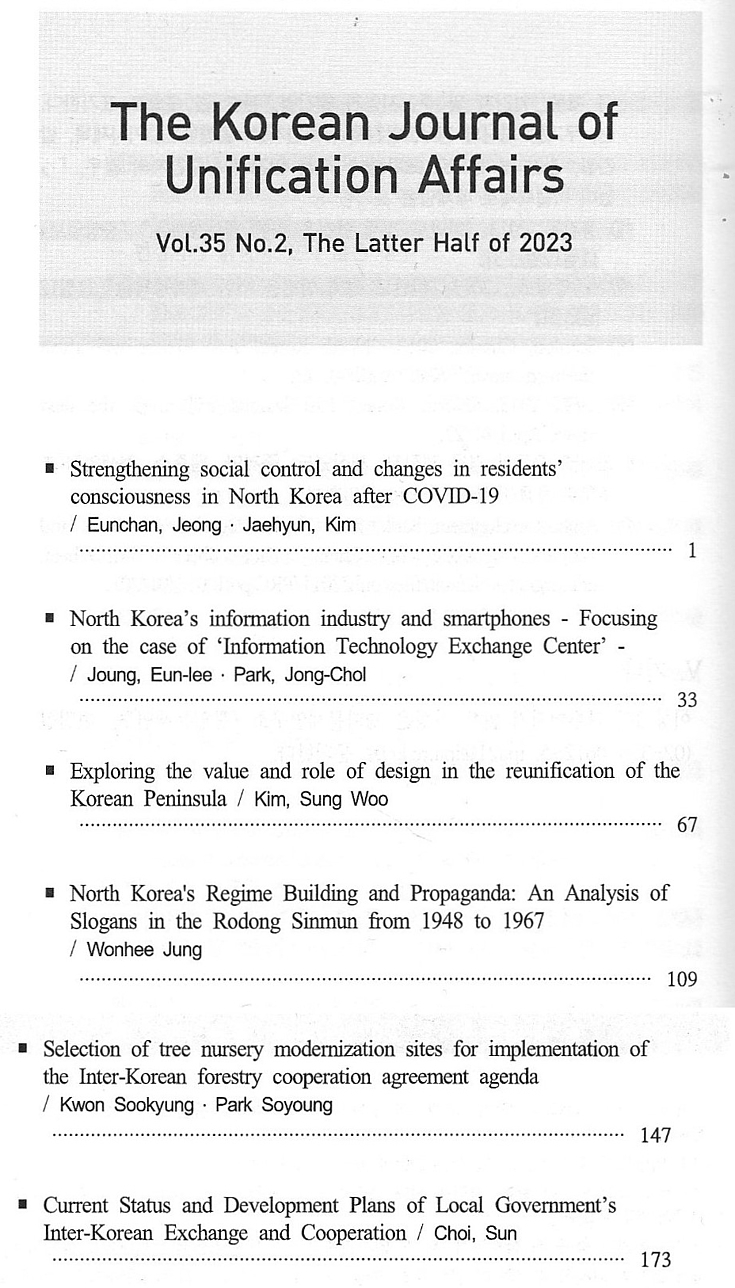Publication
The Korean Journal of Unification Affairs (Vol.35 No.2)

The contents of the journal cover a range of subjects, including the increase in social control, analysis of propaganda efforts by the regime-affiliated “Rodong Sinmun” (In English: Rodong Newspaper) from 1948 to 1967, and the development of the information-technology-exchange Center in North Korea.
During the COVID-19 pandemic, social control regarding ideology, organization, and lawfulness significantly intensified. Particularly, ideological education, control over organizational structures, and persecution of dissenting political views notably increased. This heightened control led to restrictions on economic freedom and cultural and political communication, making it significantly challenging for North Korean citizens to form their own opinions.
Another article focuses on analyzing the "Rodong Sinmun" during its founding period. It revealed an initial emphasis of slogans on the Korean War, later the consolidation of legitimacy domestically, and eventually, in the 1960s, a decline in mentions of the Soviet Union and China. Since 1956, the number of slogans focusing on major political events such as party conferences sharply increased. Moreover, since the 1960s, slogans increasingly focused on Kim Il-sung, his ideas, and his party leadership. Given that party propaganda is one of the main instruments for the regime to control society, analyzing representative slogans serves as a starting point to understand the complex propaganda system of the DPRK.
Another article examines the information-technology-exchange Center in North Korea, which quickly spread throughout the country with the emergence of smartphones. Considering the population's desire for information and the government's desire to control it, the Center assumed the role of an information distribution authority. Consequently, the Center ultimately determines which contents are visible on the North Korean intranet. Despite strict censorship, some citizens of the country attempt to access information from the rest of the world through various technical means. The state's monopoly and the information-technology-exchange Center led to an independent information industry in the country, detached from the outside world. While there were initial signs of opening and liberalizing the information sector in North Korea, the state's dominance remains overwhelmingly strong.
For an overview of all articles and their respective authors, please refer to the figure on the right.
